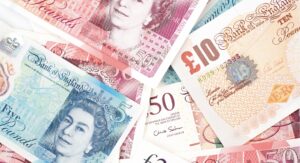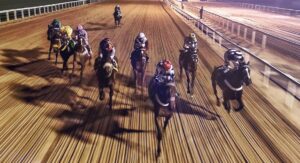Favourite-Longshot Bias
A substantial factor that contributes towards betting success, is mentality. Emotions, preconceptions and state of mind play an integral role in determining what a punter does, and whether it works. The nature of horse racing enables runners to go off at a wide range of odds and the longer priced runners often entice individuals who are searching for a ‘working man’s price’. But does this strategy pay dividends, or is it the quick way to the poorhouse?
Favourite v Longshot
Part of the allure of betting, and in particular betting on horse racing, is the potential to win vast sums of money in a short period of time.
Unfortunately for the punters that like to speculate with the long-priced horses, the odds are stacked against them. Studies from around the world over a range of sports have created a theory called the favourite-longshot bias.
The theory suggests in betting odds, biased estimates of the probability of horses winning exist – with outsiders regularly over bet and favourites and short priced runners under bet. This suggests that in the long run, better returns will be obtained by backing short odds runners as opposed to those whose prices offer more lucrative returns.
Below is a table of the record of horses by SP rank over the last 10 years in the UK and Ireland:
| SP Rank | Winners | Runners | Win S/R | P/L to SP | ROI to SP |
|---|---|---|---|---|---|
| 1 | 38,375 | 120,599 | 31.82% | -£8,659.70 | -7.18% |
| 2 | 21,511 | 112,316 | 19.15% | -£13,477.75 | -12% |
| 3 | 14,735 | 112,312 | 13.12% | -£16,704.19 | -14.87% |
| 4 | 10,468 | 115,218 | 9.39% | -£21,539.02 | -19.31% |
| 5 | 7,809 | 107,773 | 7.25% | -£22,820.00 | -21.17% |
| 6 | 5,470 | 101,542 | 5.39% | -£27,710.50 | -27.29% |
| 7 | 3,905 | 92,827 | 4.21% | -£29,246.50 | -31.51% |
| 8 | 2,553 | 80,166 | 3.18% | -£31,127.00 | -38.83% |
| 9 | 1,774 | 67,725 | 2.62% | -£28,288.00 | -41.77% |
| 10 | 1,189 | 55,133 | 2.16% | -£24,479.00 | -44.40% |
There is a clear trend in terms of win percentage, profit and loss and ROI. The horses who start as favourite (SP rank 1), win more and produce a relatively smaller loss, thus giving a better return on investment (backed blindly, all of the SP ranks give a negative return).
As the horse’s position in the market gets lower (i.e. further away from being favourite), the win strike rate decrease and the return on investment gets worse.
Therefore, those who are backing horses who are 9th or 10th best in at the market are looking at losses of 40% upwards. Conversely, favourite backers are looking at a more palatable 7.18% loss when backing the market leaders blindly.

Why Does the Bias Exist?
There are three primary reasons why the favourite-longshot bias exists:
- Bookmaker margins
- Difficult to price
- Punter mind set
When bookmakers compile their markets, as a general rule they will start with by attributing odds to the favourites and fancied horses and work backwards from there.
The outsiders of the field are the last runners looked at are often their prices are based on the bookmakers working to a set book percentage structure. They may price up the outsiders shorter to ensure that their margins include the desired amount of inbuilt profit.
These horses are more difficult to price up than the market leaders who will generally have a more consistent form profile, or will have shown in previous starts that they have the ability to win the particular race. Safety first as far as the bookmakers are concerned.
Thirdly, is punter mind set. The average recreational gambler in betting shops and online would rather speculate on outsiders, outlaying small stakes in the hope of a large payday, as opposed to backing short priced runners for smaller, more regular returns. As such, the shorter priced runners are under backed and offer more value.
Betting Exchanges
The betting exchanges have served to highlight the discrepancy between the fancied runners and outsiders, in terms of their actual odds. Unlike bookmakers, the betting exchanges work to very tight margins (typically 100.5-101%) and therefore the odds of the horses are much closer to their ‘true’ price.
The table below gives the return for horses based on their industry starting price (SP), with the returns also given on the Betfair Starting Prices (BSP).
| Odds | Winners | Runners | Win S/R | P/L Betfair | ROI Betfair | P/L to SP | ROI to SP |
|---|---|---|---|---|---|---|---|
| 1.5 or shorter | 3,288 | 4,555 | 72.18% | -£29.76 | -0.65% | -£126.66 | -2.78% |
| 1.5-2.0 | 7,971 | 15,142 | 52.64% | -£536.52 | -3.54% | -£1,046.00 | -6.91% |
| 2.01-3 | 15,941 | 45,128 | 35.32% | -£1,454.62 | -3.22% | -£3,437.55 | -7.62% |
| 3.01 and 5 | 29,606 | 134,883 | 21.95% | -£2,636.88 | -1.95% | -£12,872.96 | -9.54% |
| 5.01 and 8 | 23,591 | 181,248 | 13.02% | -£5,341.32 | -2.95% | -£24,763.50 | -13.66% |
| 13.01 and 21 | 8,276 | 201,528 | 4.11% | -£84.20 | -0.04% | -£58,002.00 | -28.78% |
| 21.01 and 34 | 3,002 | 148,514 | 2.02% | -£5,393.03 | -3.63% | -£62,910.00 | -42.36% |
| >34.00 | 904 | 147,579 | 0.61% | -£31,516.62 | -21.36% | -£95,859.00 | -64.95% |
Based on standard bookmaker returns, as the odds of the horses get bigger, the returns gets poorer. The ROI for horses with odds of 3.00 or shorter is just -2.78%, but when backing horses who are bigger than 34.00, the returns are -64.95%. As the odds get bigger, without fail, the ROI gets worse.
However, when looking at the Betfair returns for the different odds brackets, there is no clear pattern.
The 1.5 or shorter group still do well and the runners who are bigger than 34 still do the worst, but the 13.01-21 bracket is actually the most profitable, giving just a -0.04% ROI. This reflects that in a free market betting exchange, the odds accurately reflect a horse’s chance of success.
The favourites and short-priced horses are often very similar on Betfair when compared with the traditional bookmakers, but the longer odds runners can often be found at several times the price.
Example
As mentioned, the long shots can be available at eye watering odds on the betting exchanges.
While the 101.00 starting price appeared huge to betting shop punters, it was not nearly as big as the one returned to those who use Betfair. 321.00 was the BSP (Betfair Starting Price) – a huge discrepancy in the returns from the industry SP.

What Lessons Can Be Learned From This?
For those who want to back outsiders, then betting exchanges provide the most generous odds. Betting outsiders in betting shops and online, particularly when incorporated in multiple bets, is statistically an unprofitable way of operating.
With multiple bets, the poor value gets compounded with each addition selection and the returns get increasingly bleak. It is generally best to focus on the horses to the fore of the market as these provide the best long term returns.
For those betting with the bookmakers, profit can be made if identifying an outsider which may have been priced up incorrectly early in the morning (if the wrong price, the horses odds are likely to contract), but it is very difficult to bet outsiders just before the race goes off, as the returns are historically so poor.




